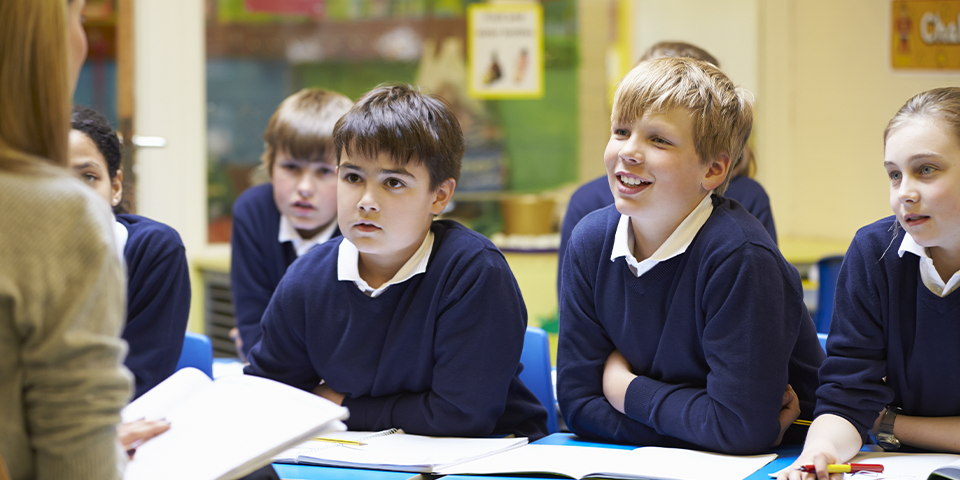- Sales & Support
- +61 2 4225 9698
- [email protected]

Digital Literacy: the past, the present and most definitely the future
July 28, 2020
Science in the Classroom
August 20, 2020Data Tells a Story: Using Renaissance Data to Discover Student Stories

By: Denise Spanswick
When our ancient ancestors sat around the fire at night, they would discuss details such as where to find food, how to successfully hunt, which plants or animals to avoid and other essential survival skills. This information was shared via some form of storytelling, based on the previous experience of group, this was essentially data. As humans, we have been using stories for centuries to help inform and educate those around us. These stories are based on data, which gives the story validity, authenticity, and relevancy.
So, what does it mean to “tell a story with data”? How can the data that is generated from our Renaissance solutions, tell us a more comprehensive story about our students? Isn’t the data really just a collection of numbers? At Renaissance, we know it can be a bit overwhelming to view numbers via reports, without adding the narrative behind the data to tell the story. This article introduces you to the types of data that you can access via Renaissance solutions and how you might tell the student story with this data. It’s the context around the data that provides the insights and it’s these insights that will help inform conversations with students and other stakeholders.
Any great insights into data explain what happened (e.g. length of time the student took to finish the Star Reading Assessment), why it is important (e.g. if student rushed through, they may not have really read the question and taken time to respond with correct answer) and how you can use it to create something actionable (e.g. use this piece of data to initiate conversation with student about how they felt they went through the test). There is a beginning to the story (e.g. the first Star Reading assessment sets a benchmark) and there is a middle to the story (e.g. the data collected over the student’s reading journey), however the end of this story really isn’t fixed. Rather, it is a journey through pieces of data that might include a goal, changing and adjusting them each term which can become exciting and engaging for both student and teacher as they see progress.
Every good story includes components such as the who, what, when, where, why, and how. The “who” are the students in the story. The “what” is the data and facts. The story must be able to draw a connection between the who and the what. “When” reveals time frames (e.g. when the student took the Star Reading assessment), and “where” identifies the program or skill (e.g. literacy, comprehension skills). “Why” is the cause and finally “how” is the way in which something happened. To successfully uncover these components, we dig deep into the data to discover the student’s story.
Telling a story through data, is not devoid of an emotional connection. Feedback from schools confirms that the reports are not the only facet of the story that we can use. It is the narrative about the facts, revealing details like a challenge the character in the story needs to overcome (e.g. the student may have a learning difficulty or disability that staff are aware of and adjustments in the assessment can be made for a more accurate result.) We will also look for anomalies in the data (e.g. we may see one student’s score is quite low compared to the rest of the class, is this a true reflection of the student or did something happen on the day of the test?) Discovering that the student had technical difficulties or interruptions to the assessment would explain the anomaly and the recommendation could be made to assess the student again. This connection also occurs by asking relevant questions about the student themselves, to link to the data.
Research indicates that 65% of the population are visual learners and that images can reduce the complexity and anxiety of seeing a bunch of numbers on a page. The data that is presented in a Star Reading Diagnostic or an Annual Progress report, offers a combination of the data displayed in numbers and visually within graphs. The benchmarks are visually represented to help inform where the students sit in comparison with other students of a similar age – part of the ingredients in the story. It is often these simple visualisations that can have the biggest impact on the story about the student and what it tells you as the teacher. These data insights are so valuable, as we communicate them to you in the right way.
Telling the student’s story through the data, is the really the process of translating the data into simpler terms in order to influence a decision or action needed for that student. There are countless measures in Renaissance data that can help tell this story, for example:
- Timing of the Star Reading assessment tells us whether it was rushed, or the student carefully considered the questions
- Scaled Scores tell us how the student reacted with the increasing difficulty of the questions and how they compare to their peers
- myON Reading Metrics cover everything from how long a student reads for, what kinds of books they are reading and how this compares with the popularity of other titles and when they are actually reading books throughout the day
- Accelerated Reader data provides insights on their comprehension of levelled books they’re reading and what level of complexity the student is reading at, assisting us in guiding book choices as necessary
This has provided just a glimpse into the data available to schools and teachers within the Renaissance suite of solutions. The real power in the data is that it is there to help, supporting teacher judgement to guide students in a way that resonates with their learning style. Our students may be reading exciting stories, but we are looking at some that are just as interesting when we look at the story our data tells us!
If you are already using Renaissance solutions at your school, there are always opportunities to discuss the data with your Renaissance Coach in professional development sessions. We are here to help and want to ensure you can always get the most out of your programs and are able to utilise the data provided in an effective and informative manner. If you aren’t yet one of the many schools supporting teachers and students achieve greater levels of growth with Renaissance solutions, contact us to find out how your school can read more of your students’ stories with data!



